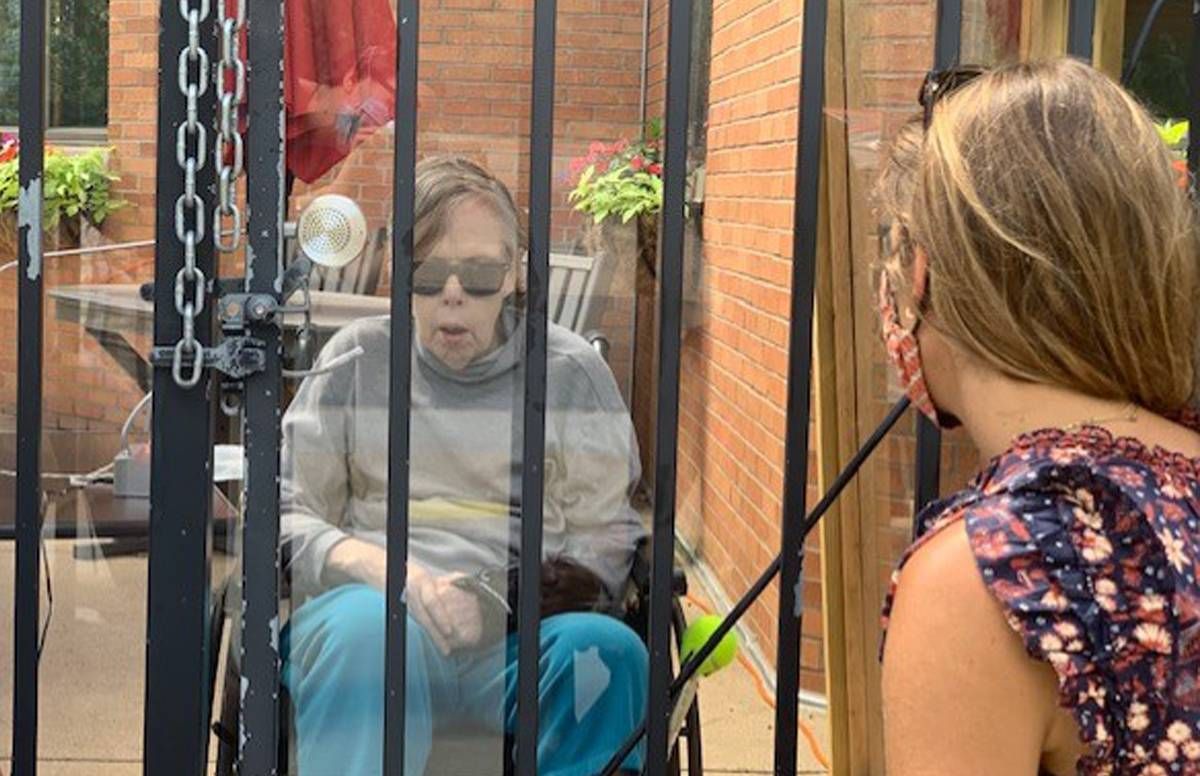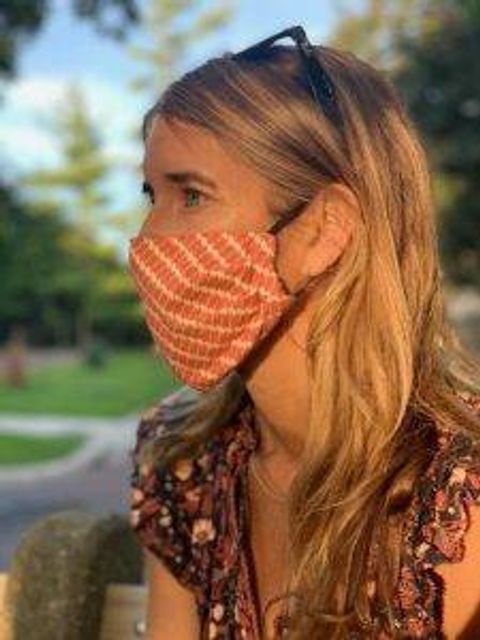A Day in the Life of an End-of-Life Doula
Wendy Longacre Brown helps clients find meaning and families find peace
Twenty years ago, arranging for a doula to provide support at a childbirth was not a common practice. But as new mothers began talking to one other about how a doula helped them have the birth experience they’d hoped for or offered insight navigating the medical system, the practice became a “must have” for many moms and their families. As with birth, so with death.

There are now about 800 end-of-life doulas around the country, and the movement is growing. These doulas are bringing greater meaning to what happens at the end of our lives by helping the dying and their caregivers navigate through the spiritual, emotional and physical changes accompanying death.
One of them is Wendy Longacre Brown, whose end-of-life doula service, Chemin (pronounced sha-meh, French for “pathways”) launched 18 months ago. Based in the Twin Cities, Brown has been leading workshops, giving lectures and helping clients recognize what a “good death” means to them, then helping create their meaningful end-of-life plans. She formerly worked as a film and video producer, a blogger on the value of handwriting and the owner of an online paper goods store, Brown Ink.
"I realized this was what I was meant to do, to help people think about death in a way that isn’t scary,”
So far, Brown has had about 20 clients. For some, she visits five to 12 times, for a cost of $200 to $800. For others, she creates a Legacy Project “Life Legacy,” preserving the person’s personal history for $850.
“All different sorts of people hire me,” Brown said. “Sometimes a caregiver or friend will reach out, and sometimes it’s the dying person themself. I’ve been hired to write a Life Legacy, then kept on to be a doula.”
Her end-of-life support might be respite help or care coordination. Often, it’s about sitting with the dying person, providing a calm presence, and vigil planning.
Here’s how one typical day unfolded for this end-of-life doula, as much as any of Brown’s days is typical:
7 a.m.
Brown begins her day with mindfulness meditation.
“Especially when I have a full day ahead of me, I want to be as focused and calm as possible before I interact with anyone,” she said. “One of our biggest rules as end-of-life doulas is not to bring our own stories into the space we’re holding for clients and families, and this reflective time helps me do that.”
After her meditation, she goes for a run, then takes a few minutes for journaling before launching into her day as a doula.
9 a.m.
Today begins with an in-person, socially distant visit to a married couple, both 74. One of them has Lewy body dementia (they asked that their names not be used). The couple’s children purchased Brown’s Legacy Project service.
Today, at their fifth session. Brown asks the spouse with dementia, with help from the family members, “How do you think those close to you will remember you? When in life have you felt most alive? What were some of the most profound lessons learned in your lives?”
Brown’s recordings and notes will be compiled into a final audio recording and a bound Life Legacy book.
11 a.m.
Time to check emails. Brown has received a request to host a virtual Wisdom Sharing Night at the monthly meeting of the Minnesota Death Collaborative, an organization of end-of-life professionals. She’s on its steering committee.
“We alternate between guest speakers and these sharing events,” she said. “It’s an opportunity for us to talk about how we’re supporting clients, while keeping their names and details confidential, of course. But it’s also time to talk about our own real-life stories,” said Brown.
She has been especially grateful for the group’s support since the recent Alzheimer’s disease diagnosis for her mother, Cheryl, 73, who lives in nearby Minnetonka.
The topic of death and dying has been a naturally recurring element in her life, Brown said, beginning with the 1977 death of her grandparents in Tenerife, Spain, in the deadliest plane crash in aviation history.
Brown was drawn to end-of-life doula work four years ago, when a beloved uncle died from Alzheimer’s and after her sister Sarah, a birth doula, gave birth to a stillborn child.
“I realized that it was all heartbreaking, but I also saw how it was also so natural. I realized this was what I was meant to do, to help people think about death in a way that isn’t scary,” Brown said.
Noon
She takes a quick break to weed for a bit in her garden, listening to the End-of-Life University podcast, one of her favorites.
1:30 p.m.
Another phone consultation, this time with a client whose mother is on hospice and not expected to live too much longer.
The mother, 68, lives in a care facility. Even during the pandemic, Brown has been able to use FaceTime to check in at her bedside and observe any changes.
Brown has some tough news to share today: she’s noticed a dramatic change in the mother’s coloring in just the past few days. Gently, she tells her client what she’s seen and suggests considering coming home from her family vacation earlier than planned.
"As tragic as the pandemic is, I think it may be shining a light on ways people can get some of the control back regarding the way they die."
“We’re the eyes and ears of expertise for many families,” Brown said. “Having both learned and practical experience, we know what to look for and can help them prepare.”
Then, they tackle the topic of the tense situation with the client’s sister, which has led to harsh words being exchanged in their mother’s room.
Brown refers to the mother’s end-of-life plan, which asked for everyone entering her room to stop, take a deep breath and enter quietly and respectfully.
They make plans for the client to talk with her sister at a neutral location.They also discuss what will happen when the mother dies, including a washing of the body ritual she had specified as something she wanted her two daughters to do together.
“There is value in being around the dead body of a loved one. People often have an easier time mourning if they are allowed to have meaningful time with the body,” Brown said. “I’ll help them make a blessing over the water being used to wash their mother, and we’ll even add some drops of her favorite scent.”
3:30 p.m.
Brown researches the resurgence of deaths at home during the pandemic.
She has been gathering anecdotal evidence about people who want to avoid dying alone, if possible, but hasn’t found numbers to back up what she’s heard.
“It certainly makes sense, though, since surveys have shown that more than seventy percent of people want to die at home. But, sadly, seventy percent die in the hospital, anyway,” Brown said. “As tragic as the pandemic is, I think it may be shining a light on ways people can get some of the control back regarding the way they die. I hope so, anyway.”
During her research, she finds a December 2019 study in The New England Journal of Medicine indicating that from 2003 to 2017, the percentage of people dying at home increased from roughly 24% to about 31%. It's the first time in more than 50 years that deaths at home surpassed deaths in the hospital.
The study’s co-author, Dr. Haider Warraich, associate director of the heart failure program at the VA Boston Healthcare System, is quoted as saying that the rise “reflects that perhaps we're able to honor more people's wishes and help them pass away in a place that's most familiar to them.”
Brown feels that new research will show an even larger increase in home deaths, especially as a response to the COVID-19 pandemic.
4:00 p.m.
It’s time for one last check of email. Brown responds to a request from a faraway friend who wants advice on how hire an end-of-life doula in another state.

She recommends visiting two websites. One is the International End of Life Doula Association, a nonprofit with a national directory, training and certification. The other is The National End-of-Life Doula Alliance, a nonprofit membership organization dedicated to supporting end-of-life doulas and the families they serve.
“There are lots of questions you need to ask,” Brown wrote back. “Ask when they believe their services would be useful. For example, if they don’t say ‘right now,’ they may not have the sense of urgency and commitment you deserve. It’s always better to meet sooner rather than later, just as it is with hospice.”
And, Brown adds, “Getting to know an end-of-life doula right away allows them to build a relationship with the client and caregivers, plus the medical or hospice team. I also tell people to make sure that the doula offers a contract of professional services — what’s in scope and out of scope — just so everyone’s boundaries are very clear.”
Next, there’s a new client request, asking about fees. Brown refers them to the pricing page on her website.
7 p.m.
Brown’s day often concludes with more journaling and perhaps some reading on her screened-in porch.
“I don’t usually read about death at the end of the day,” she said. “But I always have one volume of Mary Oliver’s poetry close to my side.”
Oliver was the National Book Award and Pulitzer Prize-winning American poet who died in January, 2019. “My favorite volume of hers is ‘Upstream.’ She’s so genuine, and she reminds me to appreciate all that is natural within the living and the dying.”

